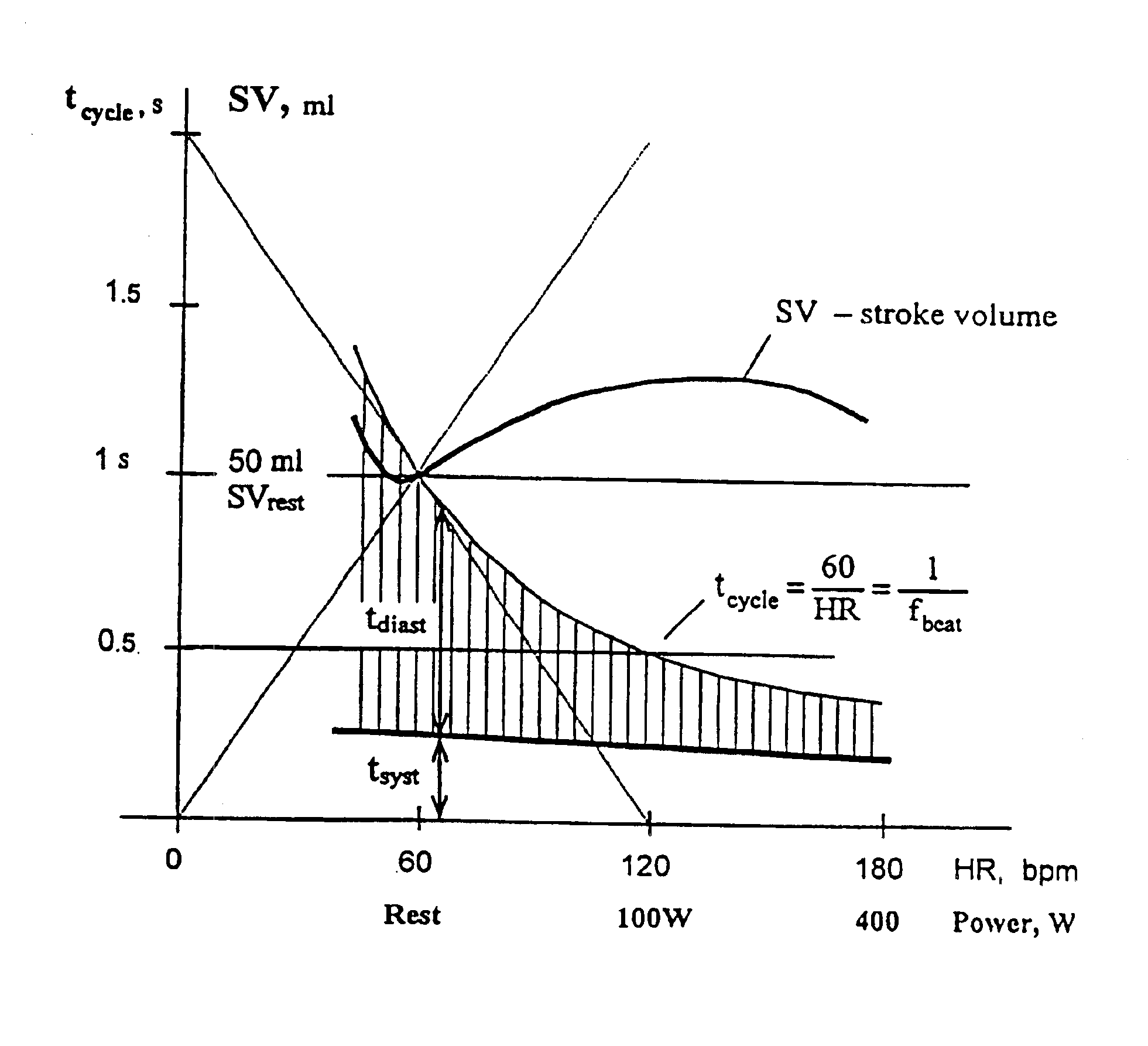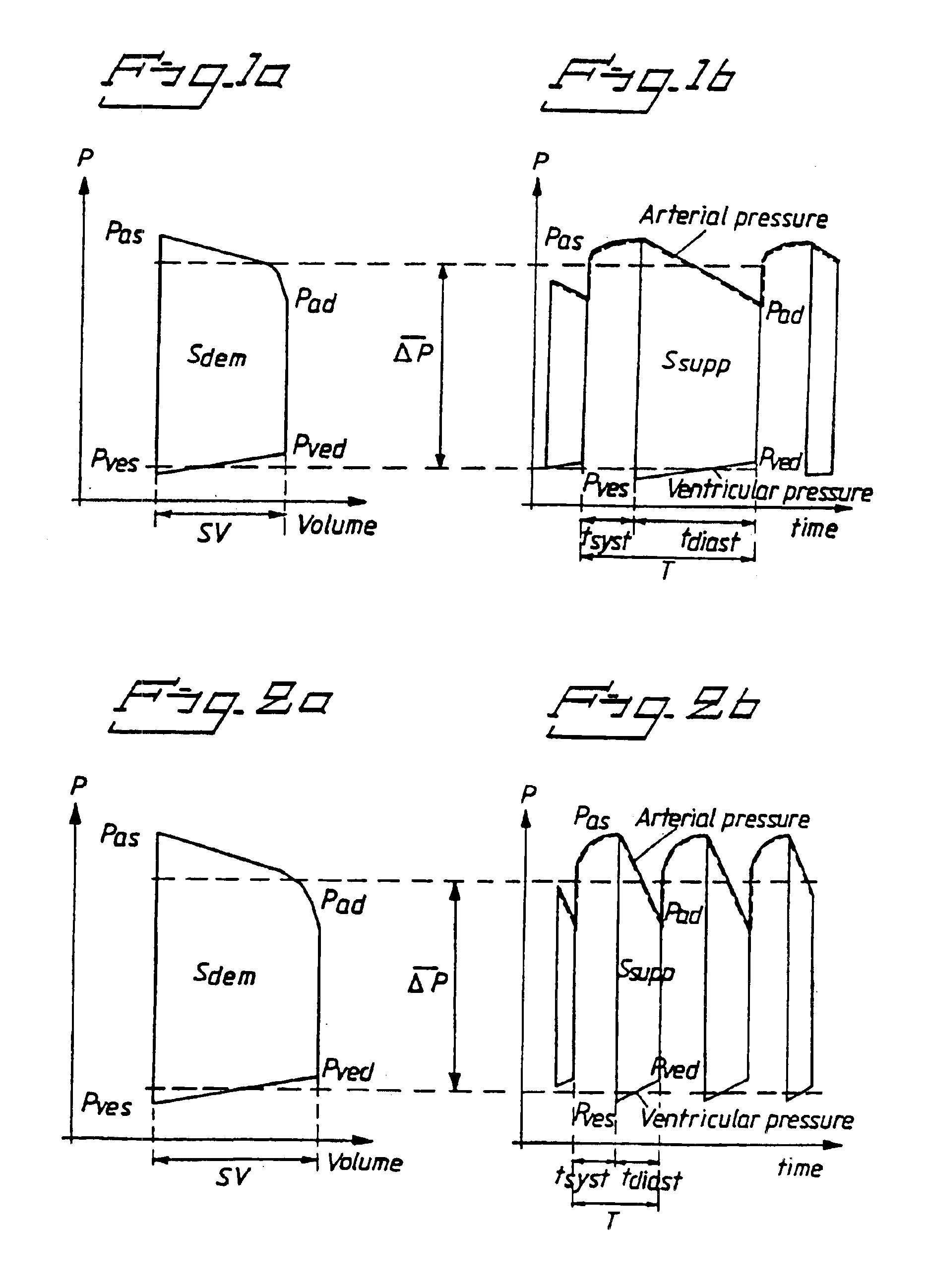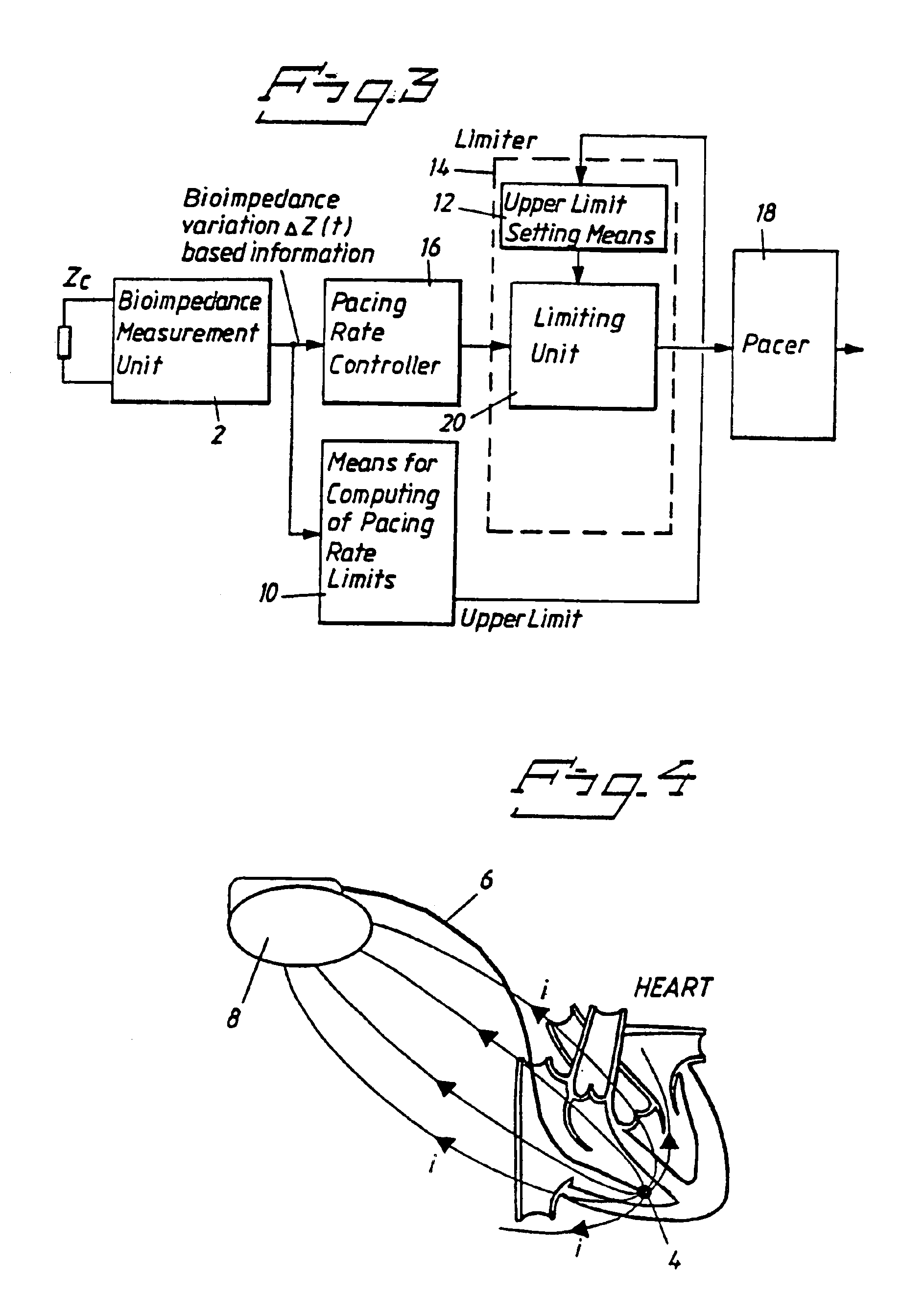Rate adaptive pacemaker
a pacemaker and adaptive technology, applied in the field of rate adaptive pacemakers, can solve the problems of heart failure, and inability to meet the physiological needs of the patient's organism, and achieve the effect of avoiding the lack of oxygen supply to the myocardium and the excessive pacemaker
- Summary
- Abstract
- Description
- Claims
- Application Information
AI Technical Summary
Benefits of technology
Problems solved by technology
Method used
Image
Examples
Embodiment Construction
[0018]As mentioned above, according to one embodiment of the pacemaker according to the invention an upper limit value for the pacing rate is determined based on a balance between the energy consumption of the myocardium and the energy supplied to the myocardium for high patient workloads.
[0019]Since the oxygen demand, or demanded energy consumption which is equal to the work of myocardium, is well correlated to the area Sdem within the ventricular pressure-volume loop shown in FIG. 1a, the following equations are valid
W=Sdem={overscore (Δ)} {overscore (P)}×SV (4)
where W denotes the work of the myocardium, {overscore (Δ)} {overscore (P)} the mean value of the ventricular pressure variations during a cardiac cycle, and SV the stroke volume.
[0020]Further, in FIGS. 1a, 1b and 2a, 2b, Pas denotes the atrial systolic pressure, Pves the ventricular systolic pressure, Pved the ventricular diastolic pressure and Pad the atrial diastolic pressure.
[0021]The energy supplied to the myocardium...
PUM
 Login to View More
Login to View More Abstract
Description
Claims
Application Information
 Login to View More
Login to View More - R&D
- Intellectual Property
- Life Sciences
- Materials
- Tech Scout
- Unparalleled Data Quality
- Higher Quality Content
- 60% Fewer Hallucinations
Browse by: Latest US Patents, China's latest patents, Technical Efficacy Thesaurus, Application Domain, Technology Topic, Popular Technical Reports.
© 2025 PatSnap. All rights reserved.Legal|Privacy policy|Modern Slavery Act Transparency Statement|Sitemap|About US| Contact US: help@patsnap.com



